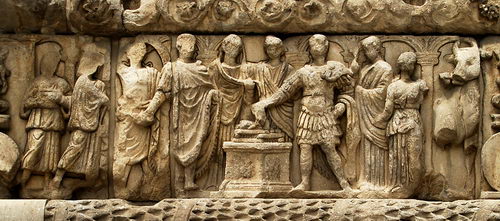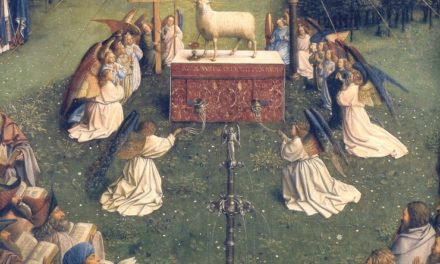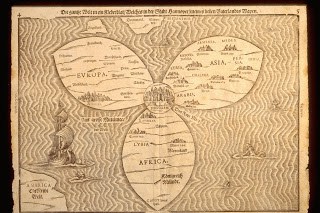In part 1 we took a look at some of the sociological reason for persecution of Christians in the Roman Empire. Then last time we began a narrative-chronology of the waves of persecution and ended with Antonius Pious.
A new approach in dealing with Christians was adopted by Marcus Aurelius who reigned form 161–180. Aurelius is known as a philosopher emperor. He authored a volume on Stoic philosophy titled Meditations. It was really more a series of notes to himself, but it became something of a classic of ancient literature. Aurelius bore not a shred of sympathy for the idea of life after death & detested as intellectually inferior anyone who carried a hope in immortality.
Reversing the Trajan policy of not going after Christians, Aurelius crafted a system of spies to gather intelligence and evidence against them. Rather than check riots that frequently called for martyr’s blood as the previous emperors had done, Aurelius encouraged them. It was during his reign Christians began to be blamed for natural catastrophes. The supposition was that the gods were upset Christians weren’t being persecuted by good Romans. With this as their moral backing, and making up for lost time, persecution under Aurelius moved to a new level of brutality. Thousands lost their heads or were tossed to beasts. It was at this time Justin Martyr became one.
But we have to note that as fierce as the Aurelian persecution was, no official edict calling for an Empire-wide extermination of Christians was issued. Nor did one come during the reigns of Septimius Severus from 193–211 or Maximinus from 235–238 when persecution of the followers of Christ was renewed. The Severian campaign sought to root out the church in Egypt and North Africa, while the Maximinian chapter aimed only at Christian leaders in specific locales.
The mid-3rd C saw a dramatic change.
As Rome celebrated its thousand-year anniversary, people cast longing eyes back to the Golden Age & Glory Days of a bygone era of power & prosperity. In comparison, Rome now seemed a tottering old-hag hobbling along on arthritic knees. She was no longer able to kick away the barbarian dogs snapping at her heels. The superstition of pagans, who of course were in the vast majority, believed the gods who favored their ancestors FOR their devotion, were now punishing them for allowing the Christians to reject them.
That being the case, wasn’t it morally right & for the public good to actively go after the followers of Jesus?
Decius only ruled from 249-51, but he was convinced maintaining Rome’s cultus was essential to political stability and a return to prosperity. As soon as he took the purple, he gave orders everyone in the empire had to swear by the Emperor’s genius; that is, practice emperor worship, as we talked about last time. This flushed out Christians who refused. They were declared traitors; enemies of the emperor, state, and public good. Their very presence was deemed a dangerous blight since the wrath of the gods was on them.
As harsh as all this sounds, the evidence indicates that at first, the goal wasn’t to kill them so much as it was to get them to recant under the threat of pain. Getting a Christian to recant was far more effective than killing them because many people are inspired by martyrdom. And of course, the martyrs were held in ultra-high esteem by The Church. So much so, a bit later, we’ll find Church Leaders telling church members to use common sense and to not run around making a big to-do about being a believer, just so they WOULD be arrested and executed!
No – most officials didn’t want to make martyrs; they preferred apostates. Think of it this way . . .
In ancient warfare, men would psych and pump themselves up in anticipation of battle. Once battle began, you wanted to present yourself like a man; tough, courageous. When you see your buddies taking blows and giving as good as they get, you stay shoulder to shoulder – a band of brothers!
But when one guy turns his back to the enemy and begins to run, it’s a fast spreading contagion of fear. Soon the entire line collapses in a rout.
Watching some Christian publicly executed for their faith often inspired as many as it freaked. But hearing of Christians recanting & returning to the paganism of their past made many wonder why THEY should remain true.
Under Decius, the 1st to be seized as treasonous were Church leaders. The hope was that a leaderless church would fall apart. In some places it did; but in others it went on as if nothing had changed.
In those places were the Church winked out, it was because by the mid 3rd C, Christianity had already produced a brand of Faith that was more image than substance. Shocking as it may seem to some, there’s been shallow Christians since the very beginning. And now, under Decius, they were flushed out into the open where they were forced to recant or die. Recant they did because their Faith was more social than sincere. But a host of others suffered martyrdom.
After a year it was clear the Decian persecution wouldn’t succeed in its goal of ending the Faith. In July of 251, Decius was killed in battle. His edict was no longer enforced.
In 253, Valerian became emperor. He was at first friendly to the Faith. But a series of calamities stirred his advisors to press him to renew the pogroms in appeasement of the gods. During this wave of persecution several great leaders of the church were killed.
The 40-some yrs from 260 to 303 were a time of relative peace for Christians. But it was the calm before the storm which arrived with the ascension of Diocletian.
While his origins are sketchy, it seems Diocletian was a slave’s son who worked himself up to supreme power. An utterly brilliant administrator, Diocletian recognized what pervious rulers ought have–that Rome was too large to be led by a single ruler. I’ll leave it to you to listen to Mike Duncan’s The History of Rome podcast to learn the details of Diocletian’s reign. Edward Gibbon calls Diocletian a 2nd Augustus because he believes he framed a new empire rather than just restore the old. And indeed, Diocletian distanced himself from his political ancestors & heritage. He very consciously adopted the ostentatiousness of an Eastern ruler, something previous Roman Emperors would have condemned as scandalous. It was he who divided the Empire into a formal E & W, each with its one major Augustus & subordinate Caesar.
In his first 2 decades, Diocletian honored the Toleration Edict Gallienus passed in 259 that restored Christians churches and burial places. His wife & daughter, along with most of his court & officials were either Christians or were favorable to them because THEIR wives & friends were. The Emperor himself was a pagan of the more superstitious flavor. But as a pragmatic politician, he believed restoring the Empire demanded a return to the old religion. Although due to family & friends he postponed the religious question, ultimately he had to take it on. There could be no peaceful co-existence between Christianity & Paganism. It was High Noon in Diocletian’s court.
The chief instigator in all this was Diocletian’s co-ruler, his son-in-law, Galerius. He prevailed on Diocletian to authorize the persecution for which his reign is so well-known.
In 303, at Gallerius’ urging, Diocletian issued a series of edicts calling for the total eradication of Christianity. Places of worship were to be torn down, sacred writings were to be burned, and clergy were to be slaughtered. The next year, all Christians had to engage in a very public display of emperor worship or face immediate execution. Although it wasn’t exactly like this, it’s close enough . . .
A raised dais was built in the center of town with a little altar where people would drop a pinch of incense and say, “Caesar is Lord.” Then they’d take a few more steps and be handed the libelli; that little scroll affirming they were good, loyal subjects. Another path led form the altar to a chopping block where an executioner stood. Those who refused to drop incense & said “Jesus, not Caesar, is Lord,” took that route where they got a haircut at the neck. Thousands died.
In the Eastern empire were Diocletian and Galerius ruled, the persecution was especially fierce. The Western Augustus Maximian, fastidiously carried out the edicts in Italy and Africa. But his subordinate, Constantius, who ruled Gaul, Britain, & Spain, refused to execute people for their faith. Persecution effectively ended in 305, when Diocletian abdicated and retired to grow cabbages at his estate.
But it was Galerius who’d put Diocletian UP to it in the first place. And Galerius stepped into the role of Eastern Augustus – so why didn’t the persecutions continue? The answer to that is because Galerius realized à It wasn’t working! He admitted that the policy of eradicating Christianity had failed miserably. In fact, he reversed himself and wrote à
“Wherefore, for this our indulgence, they ought to pray to their God for our safety, for that of the republic, and for their own, that the republic may continue uninjured on every side, and that they may be able to live securely in their homes.”
It’s reported that at the end of his life, as he lay abed, ill, he asked his Christians subjects pray for him. To encourage their prayers he passed an Edict of Toleration in 311, officially ending persecution. It was followed a year later by Constantine’s famous Edict of Milan saying much the same.
Since we shared a little about the interplay of the Early Church in the Roman Empire & their enemies to the East, the Persian Sassanids, in Season 1, we won’t go into that whole chapter now, except to say that when Christians were persona non-grata in the W, the Sassanids welcomed them with open arms. Many refugees fled there, turning the E into a Christian enclave that quickly developed into a HQs and center of scholarship. The Sassanids followed the old line that the enemy of my enemy is my friend & assumed the Christians would be allies in their on-going tussle with Rome. But when Constantine revoked persecution and claimed to be a Christian, the Sassanids began to fear Christians as a dangerous 5th column in their ranks and persecution began. More of the details to that are to be had in Season 1.
Let’s end this short series on the Persecution of the Church in the First Centuries by considering the impact in had on the Church. Most of the Emperors eventually realized, as did Galerius too late, persecution didn’t really work. Killing Christians didn’t end the Faith. On the contrary, many were won to Christ by observing the gracious & courageous way so many of the martyrs died. A quote from the early church father Tertullian is oft given: “The blood of the martyrs is the seed of the Church.” The sheer NUMBER of Christians may be less due to persecution. But one positive effect persecution yielded was that those who DID claim the name of Christ were real-deal followers of the Son of God. People didn’t join a church just so they could pad their resume or enhance their social standing. Being a Christian was risky across the board. People stood in danger socially, economically & physically. Persecution also encouraged the spread of the faith to new regions as people fled hostility.
Persecution helped to settle the challenge church leaders faced on what belonged in the canon of NT Scripture. The tests they applied to settling the canon had to be rigorous, because they knew people would not give their lives for spurious inkings.
Persecution also sharpened the thinking of church leaders as they defended the faith in the face of often erudite attacks by pagan critics. What’s interesting is that the vast majority of arguments against the Faith voice by critics & skeptics today were leveled by critics of the 1st thru 3rd Cs. These critics were learned men, skilled in philosophy and rhetoric. But each of their objections were amply answered by early Church Fathers known today as The Apologists. The answers modern day apologists use in defense of the Faith are largely built on the pioneering work of the originals. Even many of the objections raised by the New Atheists are rebutted by 2000 year old answers.
Though it’s questionable whether or not they ever read them, the Early Apologists wrote some of their defenses of Christianity to no one less than the Emperor, seeking to reason with him on why persecuting Christians was bad policy. These “Apologies” as they’re called, weren’t wild-eyed polemics threatening the Emperor with God’s wrath if they didn’t lighten up. They were most often attempts to use Roman law, Greek philosophy and the weight of tradition, which remember the Roman’s put great store by, to persuade the Emperor that Christianity ought to be tolerated along with Rome’s other faiths.
All that is persecution’s up-side. What about the down? Well, Believers ended up so busy protecting themselves there was scant opportunity for them to develop a deep theological heritage to enrich those who came after. Yes, there were a handful like the Apologists who managed to get out some material, but with the many thousands who DID in fact come to faith, we would expect a much larger body of literary work. Persecution both limited the opportunity to produce that, and what work that WAS produced, was frequently used to fuel the fires Christians were then burnt on.
Another problem that rose, and we dealt with this in Season 1, was what to do with those believers who faltered during persecution and gave in to the pressure to recant. What was to be done with those Christians who burned a pinch of incense, said “Caesar is Lord,” took a libelli, then, once the threat of persecution was passed, repented of recanting and wanted to come back to church? These were called the lapsed, because their faith had lapsed in the heat of persecution. This became an especially trying issue after Constantine officially revoked persecution once & for all, for 2 reasons . . .
1) Constantine took over right after the 10th & most virulent phase of persecution. It was also empire wide, though it was enforced more firmly in the E. A major test used for weeding out believers was the requirement of swearing by the Emperor’s genius, which as we’ve seen, the faithful could not do. But, a bunch of the lapsed, DID! And that leads to the 2nd reason à
2) All those who’d lapsed realized that with the Edict of Milan official persecution was most likely over for good. So, instead of staying de-canted, so as to avoid upcoming persecutions, they figured it was safe to return to Church. Andà Here they came.
The Church was split over whether to allow them back or not. Some favored restoration, others, not so much. Many fellowships split over the issue. Church leaders took sides in the debate and fired off sometimes heated missives at one another. For more on this, you can listen to the episode in Season 1 called The Lapsed Dance.
Another negative effect of persecution was a warped result of a positive. The faith & courage of the martyrs not only challenged the shallowness of rank paganism, it inspired people to follow their example. But not just to live by faith in Jesus; they went further and longed to die like their heroes. The desire to suffer martyrdom became a problem church leaders had to address at a few points.
Ha! Think of that. Instead of Pastor Alexius asking for volunteers for the nursery ministry, he had to plead with his people not to go to the marketplace crying out that they’re Christians; “Please! Somebody arrest & torture me to death.” But that gives us a hint as to just how highly martyrs were regarded in the Early Church. When they were regarded that highly, it’s not difficult to see why there were many in the Church who regarded lapsed believers as scum.
What made for a major brouhaha was when it wasn’t just everyday church members who’d lapsed, but when it as a pastor.





